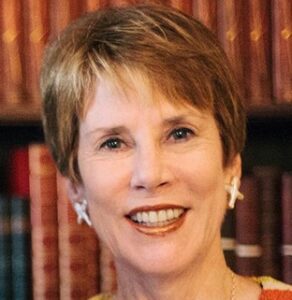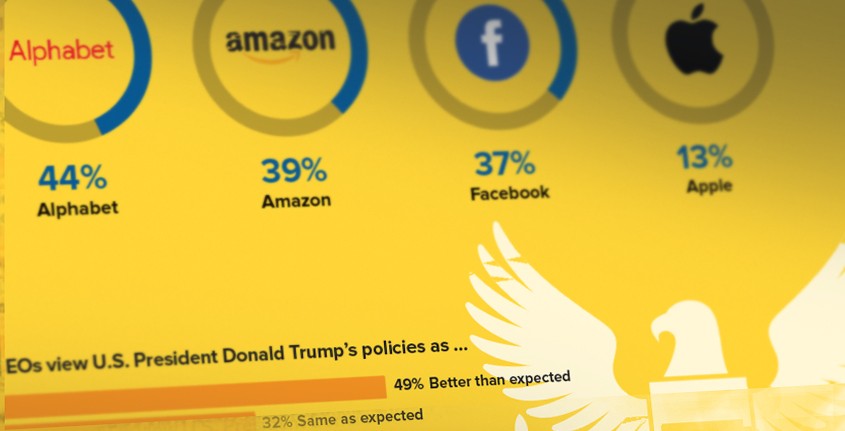How to (Finally) Close the Gender Pay Gap
Jewelle Bickford does not mince words.
It’s clear, beyond the shadow of a doubt, that the workforce is structurally engineered against women, Share on X says Ms. Bickford, a partner at Evercore Wealth Management, which is a division of Evercore, a global independent investment advisory based in New York.
A few proof points. Globally, the average pay for women in 2017 was just 57 percent of what men earned, according to the World Economic Forum. Today, women in the U.S. earn just 80 cents on the dollar compared to male counterparts, with black and Hispanic females faring worse. Between 2008 and 2017, the gap for full-time workers narrowed by a measly 2 percentage points—and it actually widened a tiny bit between 2016 and 2017. The kicker: The pay gap grows as women move higher up the corporate ladder, according to research published in the Harvard Business Review.
Ms. Bickford has seen instances of unequal pay and gender bias throughout her career. She spent 15 years as global partner at the Rothschild Group and also chaired the Women and Wealth Forum for GenSpring, the wealth management division of SunTrust Bank. In 2015, Ms. Bickford decided to act. She reached out to her friends Ronee Hagen and Ellen Kullman—the former CEOs of Polymer Group and DuPont, respectively. Together, they created Paradigm for Parity, a group of business leaders who seek to close the corporate leadership gap by 2030.
Although that is little more than a decade away, Ms. Bickford believes external forces are building the momentum for change. “Previously, if you weren’t pushed out after filing a complaint, you were at least deemed a troublemaker,” she says. “Today, there’s too much risk to close ranks around a company and hide. First, there’s a talent war. Second, word can spread in a nanosecond thanks to social media.”
Indeed, as the #MeToo movement continues to bring gender issues to the forefront of the corporate consciousness, the persistent chasm between male and female pay has been thrown into stark relief. As a result, major companies from Accenture and Bank of America to Coca-Cola and Walmart have joined Paradigm for Parity’s coalition. All of the group’s members have promised to implement the organization’s 5-Point Action Plan to achieve gender parity within the next 12 years.
“It’s clear, beyond the shadow of a doubt, that the workforce is structurally engineered against women.”
—Jewelle Bickford, Evercore Wealth Management
Those five steps include minimizing or eliminating unconscious bias; significantly increasing the number of women in senior operating roles; measuring targets and communicating progress and results regularly; basing career progress on business results, not presence; and providing high-potential women with sponsors in addition to mentors. (Ms. Bickford says that sponsors are different from mentors in that they not only advise sponsees but champion and push them in the ways male leaders have historically groomed younger men for leadership.)
In creating Paradigm for Parity’s action plan, Ms. Bickford says she and her co-creators “recognized a real need for actionable steps that lead to undeniable results.” In other words, less talking the talk and more walking the walk to actually move the needle on pay equality.
Know Better, Do Better
As management theory guru Peter Drucker once said, “If you can’t measure it, you can’t improve it.” Most companies today are not seeing progress in closing the pay gap because they are neither tracking nor analyzing pay by gender. Ms. Bickford points to Salesforce CEO Marc Benioff as “a personification of the well-meaning CEO who finds it hard to contemplate there’s a wage gap in his company until he actually measures it.” Mr. Benioff himself said that he at first found the notion that Salesforce might have a problem with salary discrepancies to be laughable. “It’s impossible because we have a great culture here,” he recently told CBS News’ 60 Minutes, recalling his thought process. “We’re a ‘best place to work.’ And we don’t do that kind of thing.”
Still, after green-lighting a first-time audit of the salaries of 17,000 employees around the world, Mr. Benioff realized a pay gap did indeed exist. Salesforce spent $6 million between 2015 and 2018 to close the gap.
But the pervasiveness of pay gaps along gender lines has to do with more than the C-suite’s failure to measure and track data around pay practices. There are deeper social and economic factors that contribute to its perniciousness. Today, according to the Institute for Women’s Policy Research (IWPR), men still primarily work in male-dominated industries and women in female-dominated ones. About four-fifths of elementary- and middle-school teachers, for example, are women. The same percentage of software developers are men. Almost three times as many females as males work in occupations with poverty-level wages, according to IWPR.
Examining these issues shows that the pay gap ties back to deeply ingrained cultural norms and gender roles. But such norms and roles have a way of self-perpetuating themselves, which is why some onlookers call for government intervention to drive change. The United Kingdom and Germany now mandate that companies publish gender pay gap data, and various European governments including Iceland, Norway, France and Spain have all passed laws establishing quotas for each gender on public companies’ boards. (See “Governments Mind the Gap,” next page.)
Executive Orders
Ms. Bickford does not believe that quotas—championed by some as the most direct and effective way to level the playing field—are the answer, however. She and Paradigm for Parity’s other co-chairs advocate for targets.
What is the difference? Targets, she explains, are specific, measurable goals set by an organization with clear time frames and deadlines. Quotas, meanwhile, are mandatory and generally imposed by an external force. But mandated quotas can be perceived by business leaders as unwelcome government interference that dismantle principles of meritocracy, and they do not increase the pool of qualified women available for leadership roles because they do not address the cultural and societal forces that keep women out of certain industries and jobs—and thus out of the leadership pipeline.
Instead of supporting government-enforced quotas, Ms. Bickford and her co-chairs believe that business executives should choose to work toward pay parity because it makes business sense. Accordingly, Paradigm for Parity asks its coalition members to pledge 50/50 gender equality as their ultimate target, while letting them work toward interim objectives of 70/30 and 60/40 breakdowns.
In terms of the business case, Ms. Bickford points to Credit Suisse Research data showing that companies with leadership positions half-filled by females demonstrated 19 percent higher returns on equity than more male-dominated organizations. Similarly, a move from zero to 30 percent female leadership corresponds to a 15 percent spike in net revenue margin, per the Peterson Institute for International Economics.
“These statistics elevate gender equality from ‘nice-to-have’ to essential,” Ms. Bickford says. “It’s a necessary investment for any business that wants to be successful and generate the best possible shareholder returns.”
Removing Blinders
The most pervasive cause of the persistent wage gap—the one that undergirds all the others and the one Paradigm for Parity is most determined to fight—is unconscious bias, says Ms. Bickford. “We all have personal biases, but when leadership is largely male, those biases become entrenched,” she says. “How many times has a CEO anointed a successor who reminds him of his son?”
“Like any change, it’s not easy at first. The biggest barrier companies face is figuring out how to do it. But once progress starts, it will build.”
—Jewelle Bickford
By committing to regular training, companies can erode the unconscious viewpoints that prevent women from advancing. They also can implement a very structured, careful hiring committee to avoid unconsciously punishing female candidates. “The entire group of decision-makers has to decide what’s on the list of hiring criteria and what isn’t,” Ms. Bickford says. Then, if something comes up in a candidate interview, the committee simply refers back to the criteria for guidance. For example, “the issue of whether someone is a good collaborator is often used as an excuse for not hiring a woman who seems too strident,” Ms. Bickford says. But if collaboration is not a top-five desired skill, the committee can agree to not use it in assessing the candidate.
Minimizing unconscious bias can support the other steps in Paradigm for Parity’s action plan. Ms. Bickford believes that implementing the plan can rapidly reverse the persistent inequality in today’s workforce. As signs of progress, she points to the fact that at least 19 Paradigm for Parity coalition members now have at least a quarter of their board seats held by women—including Newmont Mining Corp., which in 2017 named two new female directors. And with more women at board meetings, a board is more likely to set companywide goals of increasing the presence of women at every level, and compel executives to track and circulate hiring and promotion practices.
“Like any change, it’s not easy at first,” she says. “The biggest barrier companies face is figuring out how to do it. But once progress starts, it will build.” That, she says, should give us all hope that our daughters will not have to fight the same battles that our mothers and grandmothers faced.




